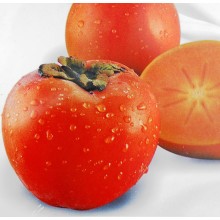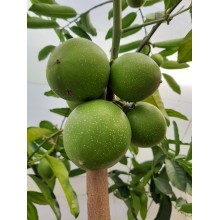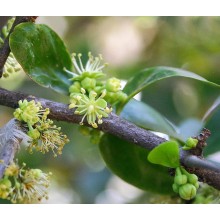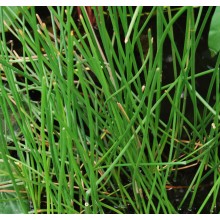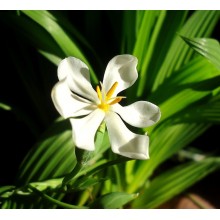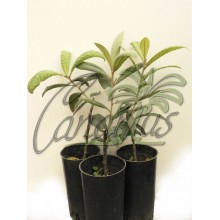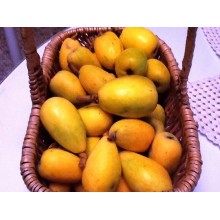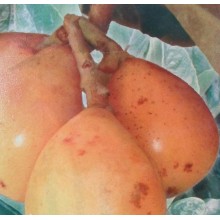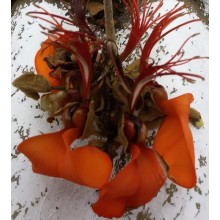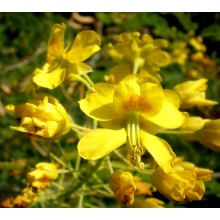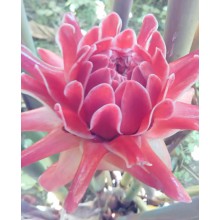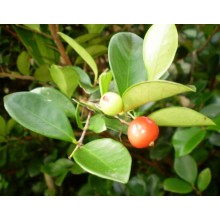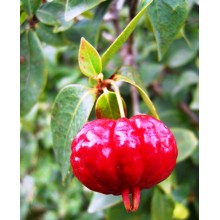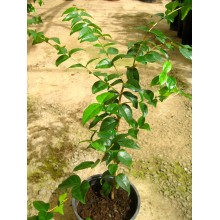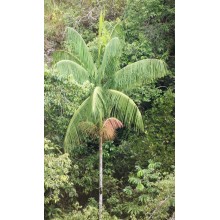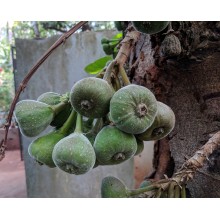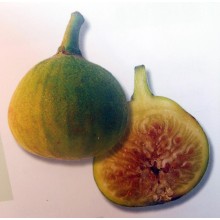Fruit, Herbs & Medicinals There are 463 products.

Fruit, Herbs & Medicinal plants are focused on getting a better health. In this section, each type of plant produce healthy effects, both fruit trees (Feijoa, Pineapple, Fina de Jete...) and plants for health, such as Graviola, Aloe vera, Callisia fragrans...
In the normal metabolism of all living beings, the organism produces some substances from nutrients latent in the environment; some of these chemicals are part of the process in all (or almost) sort of species. Normally, the useful compounds are concentrated in some of its parts: leaves, seeds, flowers...
Find out your advisable plant and buy it online!
Subcategories
-
Tropical Fruit Plants
The Canary Islands are a paradise for exotic fruits and we offer the largest selection in Europe of tropical fruit trees. Canarius ships many cultivars of mango, papaya, lychee and sugar cane; and also the more uncommon species such as carambola, longan, noni and the real cacao tree. Only the best varieties are propagated and grafted onto stronger rootstocks. Tropical fruit trees do better in warm areas but many will also thrive in mediterranean climates, where mango, avocado and lychee can survive light frosts and fruit regularly.
-
Temperate Fruits
Temperate fruit plants grow well in areas with winter frost, and many of them do need frost in order to grow properly. The most popular trees are apples, pears or peaches, but some are quite uncommon and exotic. Many low-growing shrubs produce healthy berries, like blackcurrants or blueberries. -
Plants for Health
In this section we gathered those plants that are said to have a positive effect on health. These species belong to different plant families and different areas of the world. The diversity of human culture has learnt to live with the diversity of plants and some species became therapeutical or medicinal. Some, like Aloe vera grow in sunny and dry conditions and can live in a small pot. Some others will become large trees and need space and time to grow. Remember to be careful, not all these plants are edible, some are toxic if eaten or applied to the skin.
-
Diospyros kaki 'Rojo Brillante' - Persimmon
Diospyros kaki 'Rojo Brillante' - Persimmon
The “rojo brillante” is the most popular Spanish cultivar of astringent persimmon. These trees show short stature with large sized fruits. The skin is orange-red and the flesh is intense yellow-orange. No seeds!
42,00 € -
Diospyros nigra - Black Sapote
Diospyros nigra - Black Sapote
Diospyros nigra, the Black Sapote, is a species of persimmon that is native to eastern Mexico and Central America south to Colombia.
69,80 € -
Dovyalis caffra - Kei apple
Dovyalis caffra - Kei apple
Small fruit tree native to Eastern South Africa to Tanzania.
45,20 € -
Eleocharis dulcis - Asian Water Chestnut
Eleocharis dulcis - Asian Water Chestnut
Pick coconut-tasting chestnuts underwater and eat them raw! This is versatile aquatic plant domesticated in SE Asia. It starts growing when temperatures go up (in April?) and bears tufts of glossy thick leaves.
12,30 € -
Eleutherine bulbosa - Dayak Onion
Eleutherine bulbosa - Dayak Onion
This reddish bulb from tropical America has leaves reminiscent of a palm-tree seedling. Flowers are white and star-shaped. Itis easy to keep and reproduce as it can be grown as winter-dormant and then loves warm and humid, greenhouse conditions with well draining soil.
16,20 € -
Eriobotrya japonica 'Algerie'
Eriobotrya japonica 'Algerie'
Commerial Spanish cultivar with round orange fruits, juicy with sweet, not-too-acid flavour. The tree is robust, with an erect crown, averaging 3 shoots per central shoot. Japanese Loquat is an excellent tree combining beauty and good-tasting fruits.
52,00 € -
Eriobotrya japonica 'Peluche'
Eriobotrya japonica 'Peluche'
Grafted tree. Spanish cultivar with very large, smooth, juicy fruits of "Japanese loquat", with a pale colour. The perfect fruit tree for the home garden, with sweet and acid fruits and very ornamental foliage. Fully hardy to about -7 C but also survives to about -17 C.
44,70 € -
Eriobotrya japonica 'Tanaka'
Eriobotrya japonica 'Tanaka'
Tanaka is a late-bearer and has rounded large fruits of good quality, sweet, thin-skinned. It is is self-fertile, even though it will bear more fruits if crossed with other cultivars of Loquat.
60,48 € 67,20 €Reduced price! -
Erythrina velutina - Mulungu
Erythrina velutina - Mulungu
Erythrina velutina - Mulungu Majestic tree which is both ornamental and useful, with bright orange-red flowers. It is found in seasonally dry forests of much of South America and it is used in popular medicine throughout most of its range.
42,00 € -
Erythrostemon mexicanus - Yellow Caesalpina
Erythrostemon mexicanus - Yellow Caesalpina
Ornamental flowering shrub, reaching 1-4 m in height. Caesalpinia mexicana typically grows in a round shape, with finely bipinnate foliage and elegant "sprays" of yellow flowers, freely produced throughout the warm season.
54,00 € -
Etlingera elatior 'Pink'
Etlingera elatior 'Pink'
This is the pink form of a fabulous exotic bloom! "Torch gingers" are tropical ornamental plants of supreme beauty. The torch-like inflorescence is produced at eye level and the vegetative shoots are also very elegant. It is used as a food ingredient for delicacies in SE Asia and also as a medicine.
30,56 € 38,20 €Reduced price! -
Eugenia pitanga
Eugenia pitanga
This shrub is similar in shape to the more popular Eugenia uniflora. Fruits are red, about 2 cm in diameter, smaller and sweeter than E. uniflora, with some taste of strawberries.
42,50 € -
Eugenia reinwardtiana
Eugenia reinwardtiana
Eugenia reinwardtiana is a shrub to small tree native to rainforests in northern Queensland, Australia, Indonesia, and the Pacific Islands. Common names include Cedar Bay Cherry, Mountain Stopper, and Nioi.
41,50 € -
Eugenia uniflora 'Manoa Orange'
Eugenia uniflora 'Manoa Orange'
Orange coloured, sweet cultivar of the Suriname Cherry, obtained at the University of Manoa in Hawaii.
42,50 € -
Eugenia uniflora - Pitanga, Suriname Cherry
Eugenia uniflora - Pitanga, Suriname Cherry
Subtropical shrub to small tree, producing sweet dark red "cherries", sometimes a bit acid, loved by children. It stands light freezes and grows outdoors in the coastal Mediterranean. It can be trained as a hedge or bonsai.
37,50 € -
Eugenia uniflora Black - Black Pitanga
Eugenia uniflora Black - Black Pitanga
Black variety of the suriname cherry. This cultivar is usually larger and sweeter than most other types.
37,20 € -
Ferraria crispa
Ferraria crispa
Truly exotic flowers, star-shaped, with frilly margins, speckled in maroon and yellow, with a sweet vanilla scent. They come out of fan-arranged leaves that grow from tiny underground corms. It is native to the Cape Province in South Africa.
25,00 € -
Ficus auriculata 'Everest'
Ficus auriculata 'Everest'
This is one of the most ornamental Ficus species. Leaves are huge, rounded, ribbed and velvety., They are bright red when they are new. As an adult, it is a large shrub to small tree, some 2-12 m tall. Figs are edible too and they are truly beautiful, because they grow directly on the trunk with a velvety shine.
49,20 € -
Ficus carica 'Blanca 1025' - Canarian Fig
Ficus carica 'Blanca 1025' - Canarian Fig
NEW! Traditional cultivar of fig from the Canary Islands
48,00 €
At the moment there are few products in this category Fruit, Herbs & Medicinals



















